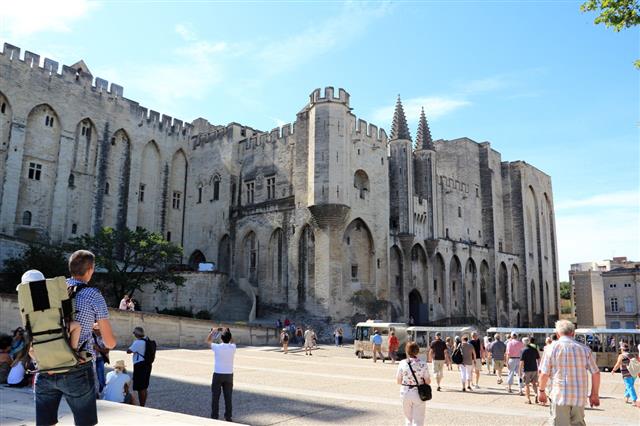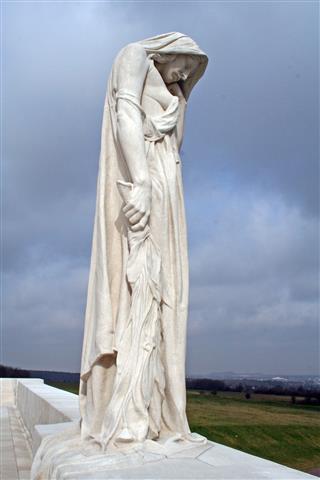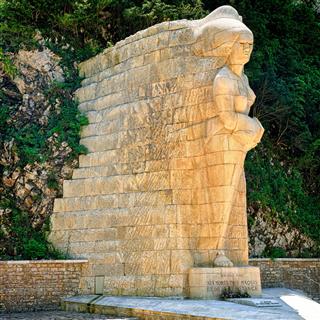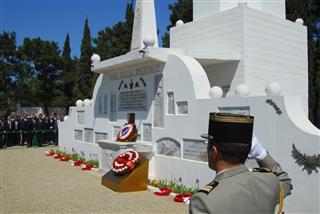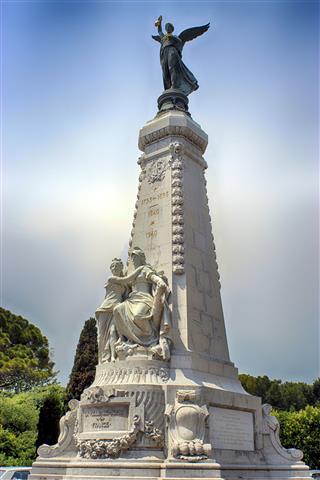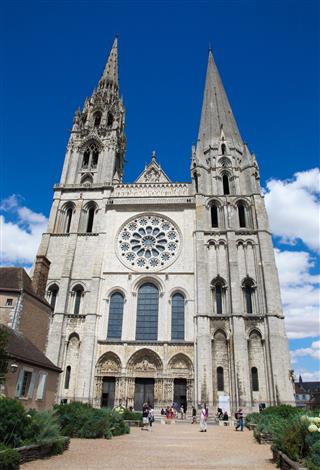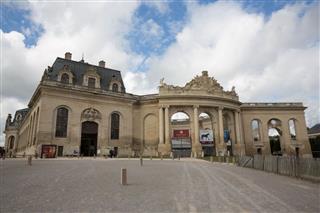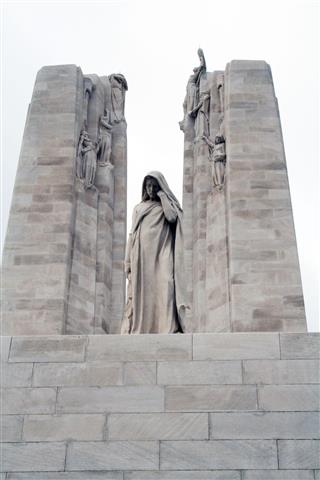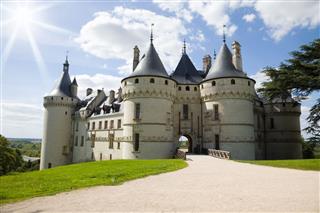
French-Canadians comprise an important part of Canada. Their culture is, indeed, distinctive and unique. Quebec and Montreal are centers of vibrant French-Canadian culture which satisfy every yearning, from culinary cravings to arts and music events.
Provincial Symbols
- Bird – Snowy Owl
- Tree – Yellow Birch
- Flower – Blue Flag Iris
- Motto – Je me souviens
Canada is located north of the United States and is a land of immigrants. Around 85% of the French-Canadians reside in the province of Quebec. It has a significant French population. A land surrounded by water on all 3 sides, it is flanked by the Atlantic Ocean, the Labrador Sea, and the Hudson Bay. It has numerous lakes and thousands of rivers and streams, out of which St. Lawrence river acts as the most significant economic highway. About 80% of the French-Canadian population lives near the shores of the St. Lawrence River. New Brunswick, Newfoundland, Labrador, and Ontario are the bordering provinces of Quebec.
History and Evolution
In the year 1541, French explorer Jacques Cartier was the first to arrive in Quebec. He attempted to set up a French colony in Quebec, but failed. The French colony was later founded and set up in the year 1608 by another French explorer named Samuel de Champlain in a series of voyages that he undertook to Canada. A sudden feeling of fear and uneasiness arose among Great Britain and France, which led to the Seven Years’ War from 1756 to 1763. In the year 1759, Quebec was conquered by the British forces, and the various foreign policies threatened French-Canadian culture and their rights. In the year 1774, a written agreement between the two nations guaranteed and gave French laws its religion and language official recognition in Quebec. However, in the year 1791, the Constitutional Act divided the provinces into two parts: the Upper Canada or Ontario with all English-speaking citizens, and Lower Canada or Quebec with all French-speaking citizens. It was much later in the year 1840, that the two provinces united into one province. It was the 1960s’ Quiet Revolution that brought about changes to remove abuse and injustice. Bill 22 or the Official Language Act was passed declaring French as the official language in 1974.
Quebec Flag
The French-Canadian flag is symbolic to an ancient military banner that had a white cross on a blue background with flowers on four sides. About 7.9 million people live in the province of Quebec out of which 5.4 million are French-Canadians and around 1.5 million of them live outside Quebec, mainly bordering the sea towards the northeastern provinces, who are also referred to as Acadians.
Acadians were the early French settlers collectively found in the provinces of New Brunswick, Nova Scotia, and Prince Edward Island. Their culture thrived mostly in these regions and are totally different from the French-Canadians who settled in Quebec.
Today, French-Canadians have evolved for four centuries and have a very strong sense of pride in their culture, people, and heritage. In the year 2008, Quebec city celebrated its 400th birthday. The city is blessed with such unique cultures that it has something for everyone from history to a wide selection of theaters and museums.
Spoken Languages
Top 5 Spoken Languages
- French – 6,235,935
- English – 1,190,435
- Italian – 103,425
- Spanish – 82,735 and
- Arabic – 78,000
Languages are nothing but voices of different cultures — they play a significant role in breaking down barriers, while traveling, and are also an added advantage when making career choices. French was declared as the official language of Quebec in 1974.
When doing business in Quebec — say from setting up contracts, catalogs, brochures, product labeling to registering company names — all have to be incorporated in French, as 80% of the population in Quebec speak French or consider French as their first language.
Customs and Traditions
French-Canadians generally have a traditional and courtly arrangement at their weddings. It is a formal religious ceremony that takes place in the presence of an accredited priest in a church. They are deeply proud of their heritage and traditions. Especially in Quebec, they have a charming blend of the Old and New World.
There are many informal customs and games followed and played at the wedding reception. The sock dance, for example, is an integral part of the French-Canadian weddings. If there is an unmarried older sibling, he/she has to wear the socks and do a funny dance. The guests will throw money at his/her feet as he/she dances. The money is later given to the couple getting married. Some also felicitate and introduce other couples who have successfully completed 10, 25, 50 or 60 years of married life. The wedding invitations are printed both in French and English with a view to preserve their French-Canadian legacy. The couples getting married are not supposed to wear new shoes at the wedding. Grains, confetti, or nuts are showered at the married couples, wishing them good luck and fertility.
Here are some general etiquette that French-Canadians observe:
- French-Canadians are very polite and formal, they greet each other with a firm handshake, and maintain proper eye contact. Only family and close friends have the discretion to call them by their first name.
- Learning simple or commonly spoken words/phrases in French will help you make friendly contact with the locals.
- In Quebec, after the initial introduction, a double-sided business card that is translated both in French and English are exchanged, with the French side facing the recipient. Glance through the card before putting it in your wallet.
- The business cards would usually have the Academic titles and degrees mentioned — always use them properly when dealing with French-Canadians.
- The thumbs up sign means “okay”, whereas the sign made with the index finger and thumb means “zero”. The thumbs down sign is to be avoided, as this gesture is considered to be offensive.
- When invited to a French-Canadian home, show your appreciation by sending the hostess flowers, a chocolate basket or wine, well in advance.
- It is regarded unlucky to present 13 flowers. Avoid giving chrysanthemums and white lilies as they are used during funerals. Gifts in the form of cash should also be avoided.
Holidays and Festivals
In Quebec, Victoria Day is not celebrated or listed as a public holiday. Instead National Patriots’ Day or Dollard-des-Ormeaux Day is celebrated, coinciding with Victoria Day to honor the revolt against the British. Another national holiday is on June 24 that celebrates the feast of St. John, the Baptist. Thanksgiving, Good Friday, Easter, and Christmas are widely observed religious holidays.
Quebec City is known for attracting people and professionals alike from around the world for its series of popular events, festivals, and performances hosted every year. Audiences are mesmerized with live performances from Rock, Hip-hop, Jazz, Heavy Metal, Opera, and Broadway shows to Romantic Classics that showcase international artists as well as emerging stars of the talented world. The video effects and lighting used during these festivals are astonishing.
Some of the well-known festivals are the International Jazz Festival, the Festival international de Lanaudiere, the Festival d’été de Québec, the Gatineau Hot Air Balloon Festival and the most popular Winter Carnival which has skiing, zip-line, ice sculptures, sleigh rides, skating, and an ice castle. These festivals not only attract people from all around the globe, but also attract a large number of media.
Religious Beliefs
The early French and British reign brought about the spread of Catholic faith in New France or Quebec. The largest religious group present in Quebec are the Roman Catholics which are not only one of the world’s oldest, but also one of the biggest religious groups.
Saint Joseph’s Oratory is one of the largest religious shrines in the world. It’s a breathtaking spiritual heritage having more than two million visitors every year. To get inside the Basilica, you will have to climb 283 stairs. Many visitors have said that it’s a great adventure and worth the climb, as the experience is serene and worthy enough to take your breath away.
Let’s take a look at Quebec city with regards to religion, as majority of the Roman Catholics reside in this province.
- Roman Catholics – 5,939,700
- Protestants – 3,35,590
- Muslims – 1,08,620
- Eastern Orthodox – 1,00,375
- Jews – 89,915
- Buddhists – 41,380
- Hindus – 24,525
- Sikhs – 8,225
Attire
French-Canadians dress in a more relaxed European manner, and they are very stylish and fashionable. Quebec has always been the fashion capital, and Montreal is one of the leading cities in the clothing sector. Ethnic, traditional costumes, white stockings, and black shoes are worn on special occasions by both men and women.
In the early 16th and 17th century, women were dressed in a mantua, and an elegant headdress known as a ‘fontange’, whereas men wore breeches and waist-length jackets, while voyageurs wore high-crowned felt hats decorated with ostrich feathers.
To combat the cold winters, the traditional arrow sash or colored wool sash was tied around the waist by men; tuque, blanket coats, fur clothing, bonnet, cape, muffs were and are still being used. Their dressing style includes a wide range of leather goods and accessories. They are well-known for their innovative use of techniques, textures, and colors.
For formal business meetings, men wear suits and ties, whereas women opt for conservative suits or formal dresses.
Cuisine
French-Canadian cooking involves extensive preparation and the use of fresh ingredients. It is influenced by rural French cuisine, and also Irish and British cuisine. Cheese and wine are preferred foods. The major meals of the day are lunch and dinner, while breakfast is pretty simple. Generally, one starts off with a starter course, after which there is a main course constituting salad course and dessert. Dessert is usually a fruit, bagels, or maple taffy. Pork, shrimp, Charlevoix lamb, fiddleheads, wildberries, beans, cheese, yogurt, corn, fish, and maple sugar are all important ingredients in Quebec food. Quebec is also the main producer in the world’s maple syrup industry, and a leading supplier of processed products ranging from berries to apple ice wines. Some typical French-Canadian dishes include Butter Tarts, Creton, Pea soup and Smoked meat sandwich. Tourtiere or meat pie is a traditional French-Canadian dish consumed generally during Christmas, New Year and Thanksgiving. When in Quebec, don’t forget to try the signature dish ‘Poutine’ — it’s made up of french fries and flavored gravy mixed with chunks of cheese curd.
Immigrants brought and introduced an array of things from delicious cuisines, cafes to world-class architecture and different customs and traditions. Shish Taouk or chicken kebabs, for example, served in a pita wrap is a traditional Lebanese dish that has gained lots of popularity in Montreal. European-inspired baked products ranging from cakes, pastries to baguettes are also well-known in Quebec. Red, white, or sparkling wines are commonly consumed while dining. Their traditional love for sweets has attracted a wide range of festivals from Maple Syrup Festival to Chocolate Festival. They are held every year where people come to smell the aroma of maple syrup preparation, see all kinds and forms of chocolates, and get together to celebrate this one-of-a-kind event.
Art
The colonial period is when art flourished, profusely from wood carving, ornamental needlework, rug hooking to producing outstanding portraits of Native Americans and the early settlers in the naive folk-art style. Painting is an art of creating pictures that records events, captures a likeness of a person, place, or object. Artists conduct various exhibitions, showcasing their cutting-edge trends, allowing everyone to experience their creative talents. Many major cities have the finest art galleries and schools that depict the simplicity and innocence of various enchanting artists around the world. The French-Canadians express themselves through various forms of art from paintings, printmaking, photography sculpture, mosaic, plastic art to installation arts. Some of the famous painters with French-Canadian descent are Jean-Paul Riopelle, Anne Savage, Guido Molinari and Arthur Villeneuve. These artists are so talented and imaginative that you would surely be blown away by their creative sense.
Architecture
Quebec city has pretty impressive, southern-style mansions that echo history in every corner. The buildings here give a very authentic European feel, with the right blend of the old and new world. There are many historic churches and chapels built with steep-pitched roofs, depicting the amazing French style decor. The roads and waterways, bridges, mills, and lighthouses are all countless reminders of how life was for the early colonists. This 400-year old city has drawn great interest from tourists as well as archaeologists from all over the world.
The Plains of Abraham, Place Royale and the Chateau Frontenac have all gained massive popularity, and are the most notable architectures of Quebec city. Charles Baillairgé and Edward Staveley were well-known architects who built houses and buildings in the Neo-Gothic style. Joseph-Ferdinand Peachy was known for using the Neo-French Renaissance style, whereas W.H. Lynn and Bruce Price were renowned for their Chateau-style architecture.
Literature & Media
The early 16th and 17th century literature included journals maintained by voyagers with their memorable expeditions and notable contributions made in setting up New France or Quebec. There are also many religious documents that were maintained by the members of the Jesuit order, that talk about the birth of Christianity in New France.
In 1764, the bilingual Quebec Gazette, and later, newspapers such as Le Canadien and La Minerve were introduced. Journalism played a vital role in conveying information, and was the only mode of communication in the 1800s. Newspapers such as La Gazette de Quebec and La Gazette de Montreal covered only political news.
Many writers, novelists, poets, essayists, and short story writers emerged and flourished in the 18th, 19th, and 20th century. Joseph-Octave Plessis, Joseph Quesnel, Flaubert Zola, Pierre de Sales Laterrière, François-Xavier Garneau, Joseph Doutre and Balzac Stendhal Molière are the names of few key writers who made notable contribution in that era and whose works are still the most talked about.
Music
French-Canadian culture is expressed by its unique music. Celtic music is an important genre of French-Canadian music. Festival Celtique de Quebec is the most prominent music festival celebrated in Quebec city. Certain traditional songs originated from North France which include Brittany, Normandy, Poitou, Picardy and Île-de-France. There also exist laws in Canada to protect French music. In the late 19th century, the French-Canadian folk music was called ‘musique folklorique’ or ‘folklore music’ which also means old music. These artists can perform a variety of songs from serious to humorous and full of joie de vivre. Some of the famous social folk dances such as cotillions, quadrilles, and gigues have a mix of French, English, Irish and Scottish influences. Musical instruments like the fiddle, guitar, and mouth organ are all key instruments, and when combined with various dance styles together, create legendary French-Canadian music. Rene Simard, Robert Charlebois, Yves Soutiere, Diane Dufresne, and Paul Piche are also some of the well-known artists whose songs highlighted their distinctive nature.
Theater and Cinema
The early documentaries were introduced by the Catholic ministries and civil officials, who tried to control what movies Quebeckers could watch. It was the 1960s that changed the outlook of cinema and let the federal government take charge. French being predominantly spoken language in Quebec and Montreal, you would find French movies being given more preference than Hollywood movies.
The Toronto International Film Festival and the Montreal Film Festival are the most prestigious festivals that showcase and award talented artists globally.
Famous French-Canadian Artists
- Ginette Reno – Un peu plus haut
- Jean-Pierre Ferland – Le chat du cafe des
- Beau Dommage – Tous les palmiers
- Associated with Fabienne Thibeault, Marie Carmen and Céline Dion – Le monde est stone, Starmania
Below is a list of top 10 French-Canadian movies (in no particular order) that have won several notable awards and been a successful hit at the box office.
- C.R.A.Z.Y. directed by Jean-Marc Vallée
- Mon oncle Antoine directed by Claude Jutra
- Incendies directed by Denis Villeneuve
- Bonheur d’occasion directed by Claude Fournier
- Cruising Bar directed by Robert Ménard
- Good Riddance directed by Francis Mankiewicz
- Léolo directed by Jean-Claude Lauzon
- Les Invasions Barbares directed by Denys Arcand
- Bon Cop, Bad Cop directed by Éric Canuel
- The Decline of the American Empire directed by Denys Arcand
Official Sports
Lacrosse
Lacrosse is a game played generally in the summers with long-handled rackets that are used to catch, carry, and throw the ball toward the opponent’s goal. This sport dates back to the Native American times and is considered as one of the oldest sport.
Quebec also caters to a wide variety of games from professional sports like soccer, baseball, basketball, football, curling, cricket to recreational sports like skiing, ice fishing, snowboarding, cross-country skiing and canoeing. They also have a wide range of individual sports like golf, wrestling, judo, and cycling.
Ice Hockey
Ice Hockey is Canada’s national sport that plays an important role in their lives. It is a game played on ice with players wearing skates holding angled sticks trying to get the flat, round puck into the opponent’s goal. The National Hockey League (NHL) annually awards the champion with the most prestigious ice hockey club trophy known as the Stanley Cup or in French as the La Coupe Stanley.
This cup is not made every year, but is kept with the winning team until a new champion is declared. It has all the winners, coaches, and management names engraved on its chalice.
Parliament and Government
The legislative assembly in Quebec comprises the Lieutenant Governor and the National Assembly. The National Assembly contains 125 members who lay down compulsory standards as recognized by the provincial government.
The Parliament holds the legislative powers, whereas the Government holds the executive power. The Parliament controls and monitors all Government actions.
The Lieutenant Governor is considered as one of the highest ranking dignitaries, who has all the constitutional powers from appointing the Premier to approving the Orders-in-Council of the government.
Celebrities
Canadians’ love for theater, music, comedy, performing arts film, dance and even circus has identified them as one of the world’s most diverse, talented and innovative people of all.
Here are the names of few famous American celebrities with French-Canadian roots, where either one or both of their parents or grandparents are of the French-Canadian descent.
★Hillary Clinton
★Jim Carrey
★Brendan Fraser
★Jessica Alba
★Angelina Jolie
★Shemar Moore
★Madonna
★Dean Cain
★Celine Dion
★Mark Ruffalo
★Chloe Sevigny
★Félix Leclerc
★Isabelle Boulay
Other Facts
- Quebec city is the heart of French Canada, a cultural capital of the province, and the family is an important social institution for French-Canadians.
- There are innumerable historic sites like the Citadel of Quebec, many brass monuments and around 400 museums scattered around the city that immerse us into the past French-Canadian heritage. It acts as a great reminder of how life was in the past.
- The Chateau Frontenac hotel is not only an iconic symbol of Quebec City, but also a Guinness World Record holder for being the most photographed hotel in the world.
- The Chocolate Museum in Quebec is a must-see for all you chocoholics out there. Not only does it showcase artistic creations made from chocolate, but also illustrates its history from Mayan civilization time to the present day.
- A large majority of people in Quebec and Montreal are particularly fond of horse meat and consider it as a delicacy.
- Inukshuk is a form of rock art used by Inuit (Eskimo) to mark a location for hunting, and these structures are found all over Arctic Canada, Alaska, and Greenland.
- There are many animals (native) found abundantly in Quebec — ranging from Arctic fox, Atlantic puffin, Wolf, Walrus, Striped skunk, Snowy owl, Tundra swan, Northern cardinal, raccoon, moose, Bald eagle to Polar bear, Greenland shark and White-tailed deer.
- The moose is found across almost all of Canada and is the largest among the deer family. The male moose has enormous flattened antlers and is a very powerful swimmer.
There is a great deal of learning that we can take from these facts. Canada can be thought of as a country which is multicultural not only in rhetoric, but in practice as well, and the diversity of the different cultures only adds to its flavor.
